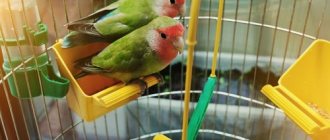Many people are interested in this question: are there miniature breeds of turtles that are suitable for keeping in a home environment? The question is related to the fact that most apartments do not have sufficient space to install a large aquarium. As a rule, in such conditions, people install small aquariums where they keep fish. Now, if there were turtles that felt great in a small aquarium, then it would be possible to have a turtle at home, and not just fish.
In fact, such turtles exist and can be easily purchased at a pet store. But before you go to the pet store, it’s a good idea to familiarize yourself with the conditions under which they are kept. Nowadays, it is difficult to find a person who would not look for at least something on the Internet, where you can really find any information on any topic.
Types of small turtles for home keeping
Small turtles are usually called those species that during their life do not grow in length more than 12 cm. If an adult is large in size, then it is no longer a miniature turtle, but a medium-sized turtle that requires completely different care. If an adult is no more than 12 cm in length, then this is what you need. At the same time, you should know that a young individual can have very small sizes: only a few cm. But, over time, it will definitely grow up and will look exactly like the type of turtle that was declared by the pet store seller. This factor must be taken into account and the living space for the animal must be prepared for the future.
Feeding
A turtle's diet is based on the needs of a particular species. The majority is food of animal origin, supplemented by permitted vegetables. You can feed turtles with special dry food, but only high-quality food and no more than once a week.
Fish and seafood
What is the best way to feed a turtle? The basis of nutrition for waterfowl turtles of any kind is low-fat small fish. Live is preferred, but not required.
The following types are suitable:
- cod;
- hake;
- perch;
- crucian carp
Fish caviar (raw!) is a real delicacy for turtles; it can and should also be offered to your pets.
It is not recommended to feed turtles with fatty fish, such as:
- capelin;
- sprat;
- sprat
The diet will also be enriched with raw seafood:
- squid;
- crabs;
- crayfish;
- shrimps;
- mussels;
- scallops;
- octopuses.
Plant food
You can give it no more than twice a week, preferably less often.
Suitable:
- dandelion leaf, plantain leaf;
- lettuce and cabbage;
- seaweed (dry);
- apples, bananas, pears;
- carrots, cucumbers, pumpkin.
Meat
Once a week you are allowed to treat your turtle to lean poultry or lean beef. It is more beneficial to give chicken or beef liver in small quantities.
Insects
The following insects are suitable in dry or fresh (even live) form:
- zoophobus;
- mealworm;
- cricket;
- locusts;
- snails;
- bloodworm;
- gammarus;
- earthworms;
- cockroaches (ash, periplanets);
- wax moth larvae;
It is not advisable to feed a turtle this food more than once a week, and it is allowed to feed moth larvae no more than once a month.
Where to feed, how often
It is recommended to organize feeding in the same place in the aquarium. The amount of food given to the animal at one time should be eaten by it within 20 minutes. As soon as the reptile begins to get distracted and scatter pieces of food, it means it has had enough and no longer needs it. It is recommended to remember this volume.
Babies are fed daily, often twice a day, dividing the daily amount of food into morning feeding and evening feeding, and adults are fed in one meal every two or three days.
Prohibited Products
It is strictly forbidden to feed your turtle food that has undergone heat treatment, especially fried food.
The following should not be included in the diet:
- spinach;
- peas;
- radish;
- cauliflower;
- mushrooms;
- pineapples;
- citrus fruit;
- nuts;
- porridge;
- dairy and fermented milk products;
- bakery products;
- crab sticks.
It is also prohibited to give seeds and seeds of permitted fruits and vegetables.
Flathead or flat-bodied turtles
This type of turtle grows up to 8-9 cm in length, with a weight ranging from 100 to 200 grams. These small and amazing creatures are very unpretentious to keep. The fact is that they feed on succulent plants, the stems of which contain a lot of moisture. Therefore, caring for these babies is so simple that it can be entrusted to children. Due to the fact that these turtles are not at all demanding of care, they can be recommended to all novice turtle keepers. The practical skills gained through the process of caring for these animals will definitely be useful in the future.
What not to feed
Aquatic turtles are omnivores. They can eat almost any food offered to them. But you shouldn't do this. They cannot digest all the food, which will disrupt the functioning of the gastrointestinal tract and lead to illness.
What not to give to turtles:
- food from the table;
- fruits and berries with seeds;
- sea fish;
- river fish of fatty varieties;
- onions, radishes, eggplants (they are spicy for animals);
- citrus peel;
- pork, lamb (too fatty, it is difficult for turtles to digest such meat);
- amber snail meat;
- elodea (contains poisonous juice).
Video on the topic. What can you feed a red-eared turtle?
Locking turtles
Under natural conditions, this type of turtle can actually be found in Mexico, America, and also in Africa. Scientists know about 4 species of these little ones, but the Sonoran and yellow turtles are the most widespread. They can grow up to 13 cm in length. As for the other two subspecies, which include striped and mud turtles, they grow in length only up to 11 cm.
For aquatic turtles
The optimal diet of an aquatic turtle is much more complex than that of a land turtle. It should be borne in mind that full-fledged live feeding is quite difficult here, since in nature such animals feed exclusively on fresh fish.
And seafood, which is offered in domestic stores, goes through cycles of freezing and thawing several times. This leads to the destruction of nucleic acid proteins, as well as oligoelements, which are vital for the predatory sea turtle.
Therefore, the addition of dry food saturated with appropriate microelements is a prerequisite for creating a complete diet. It is imperative to check whether the food contains fat-soluble vitamin complexes, of which vitamins A and E are considered the most popular.
Spotted turtles
This species of turtle is not considered completely aquatic, since turtles love to be on land and require an Aqua terrarium to keep them. This helps create exactly the living conditions to which this species of turtle is accustomed. Spotted turtles can reach a length of 13 cm, which is absolutely acceptable for the conditions of our apartments.
Three-keeled Chinese turtles
The average size of adult individuals ranges from 13 cm. Among other things, this species of turtle has an attractive appearance and a rather calm character. Such characteristics contribute to the fact that three-keeled Chinese turtles become the favorites of many turtle keepers. Plus, they do not require special conditions of detention. This factor is considered ideal for those who for the first time in their life decided to have a turtle at home.
Care
A water turtle at home, of course, requires constant care, albeit not energy-consuming.
Basic principles of care:
- it is necessary to monitor the behavior of the reptile and its state of health daily;
- make sure that the water in the terrarium remains clean and change it on time;
- when changing the water in the terrarium, it is necessary to thoroughly rinse all decorative elements;
- replace gravel in a timely manner and ensure its cleanliness;
- feed the animal in accordance with the requirements of the species, on time;
- enrich the diet with special mineral supplements;
- start treatment in a timely manner if alarming symptoms occur.
The class of aquatic aquarium turtles is really undemanding in care and maintenance.
What to look for when purchasing
Aquatic turtles are quite active creatures. A healthy animal shows interest in everything that is happening, eats well, and its reflexes work perfectly (for example, in case of the slightest danger, the reptile quickly hides in its shell). It is recommended to purchase a turtle from a trusted pet store or nursery, where there is no doubt about the living conditions created for the animals. When purchasing, the main criteria for evaluating a turtle will be its activity and appearance.
A properly raised young reptile has the following characteristics:
- smooth and clean shell without plaque or damage;
- clear, clean eyes, without wounds and suppuration;
- active swimming;
- good reflexes and movement of limbs.
It is also worth noting that a truly healthy animal is simply pleasant to look at.
Important! Aquarium turtles that live with fish should be small, and the fish, accordingly, should be large enough so that they are not perceived as food by the reptiles.
How to pick up
To communicate with an animal, you need to learn how to hold it correctly. The turtle is picked up under the belly, if it is small, and held in the palm of your hand, while larger animals are taken with both hands on the sides of the shell and be sure to grab the belly.
A turtle, like any animal, needs to be taught to be touched gradually. If your pet hisses or tries to hide, you should not force him to communicate. When the animal has become accustomed to the owner and his hands, you can sit him on your hand or knee, but it is not advisable to keep him in a canopy for a long time - this is unpleasant for turtles.
Changing water
The amount of water is indicated in the requirements for keeping the species, but the general criterion for quality is purity. Accordingly, the water should be changed at least once a month, and more often if it is heavily polluted.
Hibernation
It is extremely difficult to properly hibernate a reptile at home. If the animal is active and does not show signs of wanting to “winter”, you should not artificially create conditions for it. Improper hibernation can cause irreparable harm to the body.
Benefits of keeping baby turtles
Many people dream of having some kind of exotic animal live in their home. It is worth noting that in some apartments you can find pythons, lizards, snakes, etc. Unfortunately, most apartments are not large enough to accommodate a crocodile, for example. Although rare, such an animal can be found.
As for the turtle, this is what is needed. Firstly, this is a completely harmless animal that will not harm anyone, including children, and secondly, a small turtle takes up very little living space. And feeding a small animal is always much easier. In addition, caring for such a pet can be entrusted to a teenager. He will not only become familiar with the living conditions of this animal and its habits, but will also learn to love nature in general, and not just pet turtles.
Taking care of your health
Compliance with all the rules for the care and maintenance of waterfowl turtles in a home apartment will protect the animal from possible infections and diseases. However, any pet can get sick. Common diseases and treatments are presented in the following table:
| Disease | Symptoms | Treatment |
| Abscess / Otitis | Tumor in the ears, on the limbs | Operation |
| Pneumonia | Does not drown, falls over, does not eat, wheezes, white mucus and bubbles appear from the nose | Deadly. Treated in a hospital or at home with injections |
| Conjunctivitis/swelling/redness of the eyes | Swollen eyes, redness, suppuration under the eyelids, lack of appetite | Local treatment |
| Soft/Twisted Shell (rickets / osteopenia / hypocalcification) | Softening of the shell, its curvature | The curvature process is irreversible; local treatment |
| Helminthiasis | Diarrhea/constipation, presence of helminths in tests | Treatment by a veterinarian |
| Dermatitis/skin fungus | Increased shedding, skin redness, white growths | Treatment by a veterinarian |
Where to keep a mini turtle
For the normal existence and development of an aquatic miniature turtle, you will need a 100-150 liter aquarium. As for the land species, a small terrarium is enough. At the same time, you need to know about the minimum and maximum temperatures so that your pet feels comfortable. It’s also a good idea to know about his diet. You need to know that all pet turtles are representatives of hot countries that need suitable temperature and humidity. Only with this approach will your pet be always healthy and delight others with its activity.
If these conditions are violated, then you need to be prepared for very unpleasant surprises. You should know that it is better to prevent negative consequences than to get rid of them later. The first thing that can happen is that the turtle gets sick, and treating such a baby, especially on your own, is very difficult and you can’t do it without a specialist herpetologist. And this, after all, is not only a loss of precious time, but also a waste of money. At the same time, we should not forget about the psychological aspect.
Other interesting articles
- Large, medium and small peaceful fish for the aquarium Among various types of pets, aquarium fish are especially popular. They are relatively inexpensive, not...
- Floating plants for an aquarium on the surface of the water Aquarium plants that belong to this group include most of the species included in the families...
- The swordtail lies on the bottom of the aquarium and breathes frequently. What to do if the fish behaves unusually, try to observe it as carefully as possible and...
Reproduction
Mating occurs in conditions of satiety, warmth and humidity all year round. It is recommended, a couple of months before the expected mating season, to place males and females in different enclosures, and preferably rooms, so that the animals do not see each other. It is recommended to place males with females.
A turtle's pregnancy can last from a week to two months. If the female is not satisfied with the conditions for laying eggs, she is restless and may refuse to eat. A few days before laying, the female will begin to look for a suitable place and dig the soil. It is recommended to organize a special box.
Eggs can be different in shape, round and oval, white and yellowish. Incubation of eggs lasts about two months. It is strongly recommended to move the eggs into a special incubator and check them daily for spoilage - rotten eggs may appear and ruin the entire clutch. The female is not interested in the clutch; further care of the babies falls on the owner.
How to determine gender
Gender is established at the stage of embryo formation in the egg. However, in most cases it is possible to accurately determine sex only after the animal reaches sexual maturity and the appearance of secondary sexual characteristics. Typically, at home, a turtle reaches maturity at the age of 2.5 to 5 years, depending on the species and conditions of detention.
There are a number of procedures that can help reveal gender earlier, such as:
- blood test for a certain number of hormones;
- radiography;
- Ultrasound;
- endoscopy.
Often such studies are uninformative and costly, and are resorted to in especially rare cases.
Let's look at how the sex of an animal is determined based on secondary sexual characteristics.
Carapace
In males: elongated, narrow, concave, quite high, noticeably smaller than in females, the posterior end has a V-shaped appearance.
In females: rounded, short, relatively flat, noticeably larger in size, the rear end is rounded.
Tail
In males: long and thin, the cloaca is located 1/3 from the edge of the shell, and looks like a longitudinal line.
In females: short and thick, the cloaca is located close to the carapace, has the appearance of an asterisk.
Limbs
In males: the claws are curved and long, quite sharp, the forelimbs are slightly longer than those of females, and well-defined femoral spurs.
In females: the limbs are shorter and more massive than in males, the claws are short and blunt.
Head
In males: the head is larger, the nose is sharper.
In females: the head is smaller than that of males, and the nose is not so pointed.
Important! Depending on the species, males and females differ in eye color.
It is also worth noting that male aquatic turtles can “show off their voice” - squeak to attract attention. They are more active than females and can show some aggression and chase other turtles even at a fairly young age.











